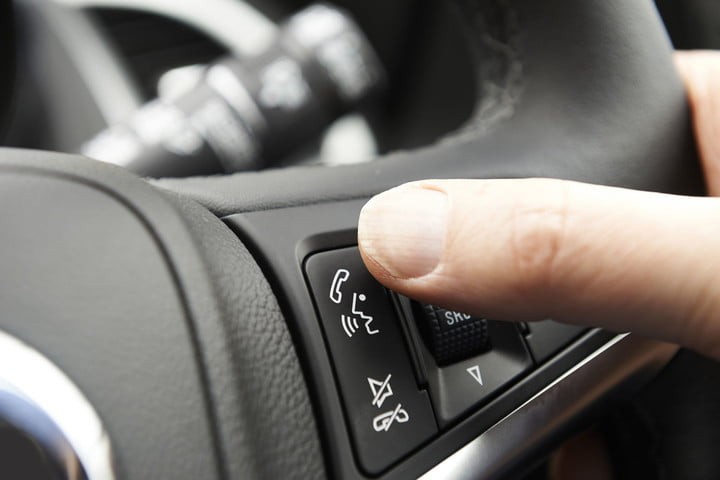In-car technology is rapidly evolving, making it surprisingly simple and affordable to equip older vehicles with modern features like Bluetooth. Gone are the days when cutting-edge connectivity was exclusive to new cars. Today, a wide array of aftermarket solutions allows you to enjoy seamless integration and enhanced safety without needing to trade in your current vehicle. Bluetooth, in particular, has become an accessible and convenient upgrade for virtually any car, regardless of its age or market value.
Bluetooth functionality significantly enhances your driving experience. It enables hands-free phone calls, routing conversations through your car’s speakers, and allows you to stream music directly from your smartphone. While some basic Bluetooth systems primarily focus on call handling, the technology, in either form, is a crucial step towards minimizing distractions and promoting safer driving habits by keeping your hands firmly on the steering wheel. This safety aspect is so vital that many jurisdictions have implemented hands-free driving laws.
Considering these benefits, let’s explore the most efficient and cost-effective methods to integrate Bluetooth into your vehicle.
Universal Bluetooth Car Kits: The Simplest Solution

For those who prefer a hassle-free setup without dealing with wiring complexities, universal Bluetooth car kits offer the easiest path to Bluetooth integration. Devices like the iClever Himbox Plus are designed for broad compatibility across various car models. These standalone units are self-contained, featuring a built-in speaker and microphone, ensuring they can function independently of your car’s existing audio system. Installation is remarkably simple; many kits are designed to clip onto your sun visor or can be mounted on your dashboard or windshield using suction cups or adhesive tape.
The portability of universal kits is a significant advantage. They can be effortlessly transferred between vehicles, making them ideal if you own multiple cars or frequently switch between them. However, a key drawback is their limited integration with your car’s native audio system. Most visor-mounted kits do not connect to your car speakers for music streaming, restricting their functionality primarily to phone calls. It’s also worth noting that adhesive mounting might leave residue on your dashboard.
Some advanced universal devices offer wired connections to your head unit, enabling music streaming and improved audio quality. However, this slightly increases the complexity of the installation. Generally, universal Bluetooth kits are a budget-friendly option, typically priced between $15 and $30.
Upgrading to an Aftermarket Car Stereo with Bluetooth
Replacing your car’s existing head unit with an aftermarket car stereo is an excellent choice for those seeking a comprehensive upgrade of their in-car audio and connectivity features. While this method requires a bit more effort and potentially some basic tools, the process is generally straightforward, especially with the detailed instructions included with most units. Many car owners find that they can successfully replace their stereo system themselves in a couple of hours. If you prefer professional installation, electronics stores typically offer this service for around $100.
The aftermarket stereo market offers a vast selection of options. Even entry-level units now commonly include Bluetooth for hands-free calling. As you explore higher price points, you gain access to advanced features like Bluetooth audio streaming, full smartphone integration via Apple CarPlay or Android Auto, text message reading, and voice command capabilities. These systems enhance both convenience and safety by allowing you to manage calls, music, and navigation without taking your eyes off the road.
The wide variety of aftermarket stereos means you can likely find a unit that complements your car’s interior aesthetics. Prices start from around $40 for basic Bluetooth-enabled stereos and can exceed several hundred dollars for premium models with extensive features. Reputable brands like Pioneer, Alpine, and Kenwood offer a range of affordable and feature-rich Bluetooth car stereos.
Vehicle-Specific Bluetooth Adapters: Maintain Factory Look
If you value maintaining the original appearance of your car’s interior and prefer to keep your factory stereo system, vehicle-specific Bluetooth adapters are an ideal solution. Retailers like Crutchfield specialize in providing a wide range of these adapters, designed for specific car makes and models.
The primary advantage of a vehicle-specific adapter is its tailored design. Engineered to integrate seamlessly with your car, these adapters ensure optimal audio quality and come with precise, vehicle-specific installation instructions. If your main goal is to add Bluetooth for hands-free calling and possibly music streaming without altering your car’s aesthetics, this is a highly effective approach. Note that some adapters might be limited to phone audio only.
Installation typically involves removing the factory stereo, connecting the adapter, and routing a microphone. The complexity can vary depending on the vehicle and adapter design, but generally, it’s a manageable DIY project. Once installed, you can enjoy Bluetooth calling and audio through your existing car speakers, preserving the factory look of your dashboard. These adapters are also generally cost-effective, often priced under $100, though luxury brands might have higher prices.
FM Transmitters: The Most Economical Bluetooth Solution
FM transmitters represent the most budget-friendly option for adding Bluetooth to your car, especially beneficial for older vehicles lacking an auxiliary input. These devices plug into your car’s cigarette lighter socket and broadcast audio over an FM radio frequency. To use an FM transmitter, you simply tune your car radio to a specified clear FM frequency, and the transmitter will broadcast audio from your Bluetooth-connected smartphone or MP3 player to your car speakers. Most FM transmitters also include hands-free calling functionality.
The affordability is a major advantage, with decent FM transmitters available for around $15. Installation is non-existent; you just plug it in and set the frequency. However, FM transmission quality can be variable. Finding a clear FM frequency can be challenging, especially in urban areas with many radio stations. As you travel, you may need to readjust the frequency to avoid interference from local radio stations. In more remote areas, static can also affect audio quality. Despite these limitations, for minimal cost and effort, FM transmitters provide a basic Bluetooth solution.
Bluetooth Receivers: Static-Free Audio via Aux Input
Bluetooth receivers offer a step up in audio quality compared to FM transmitters, provided your car has an auxiliary (AUX) input. These compact devices plug into your car’s AUX port and pair with your smartphone via Bluetooth. Once connected, you can stream music, make hands-free calls, and enjoy other Bluetooth functionalities through your car’s sound system with a stable, clear audio signal.
Unlike FM transmitters that rely on radio waves, Bluetooth receivers establish a direct digital connection, eliminating static and interference typical of FM transmission. However, the prerequisite of an AUX input means they are not suitable for all older cars. For vehicles with an AUX port, Bluetooth receivers offer superior sound quality at a reasonable price.
The market offers a wide range of Bluetooth receivers, typically starting around $20. More advanced models may include features like multi-device pairing and companion apps. The Mpow Bluetooth receiver, for example, is praised for its sleek design and features like a car locator function and dual-device connectivity, allowing you to manage audio from two devices simultaneously.
Conclusion
Adding Bluetooth to your car is a worthwhile upgrade that enhances both convenience and safety. Whether you opt for the simplicity of a universal kit, the comprehensive features of an aftermarket stereo, the integrated look of a vehicle-specific adapter, the affordability of an FM transmitter, or the quality audio of a Bluetooth receiver, there’s a solution to fit every need and budget. By choosing the right method, you can easily bring your older car into the modern age of connectivity, making every drive more enjoyable and safer.
